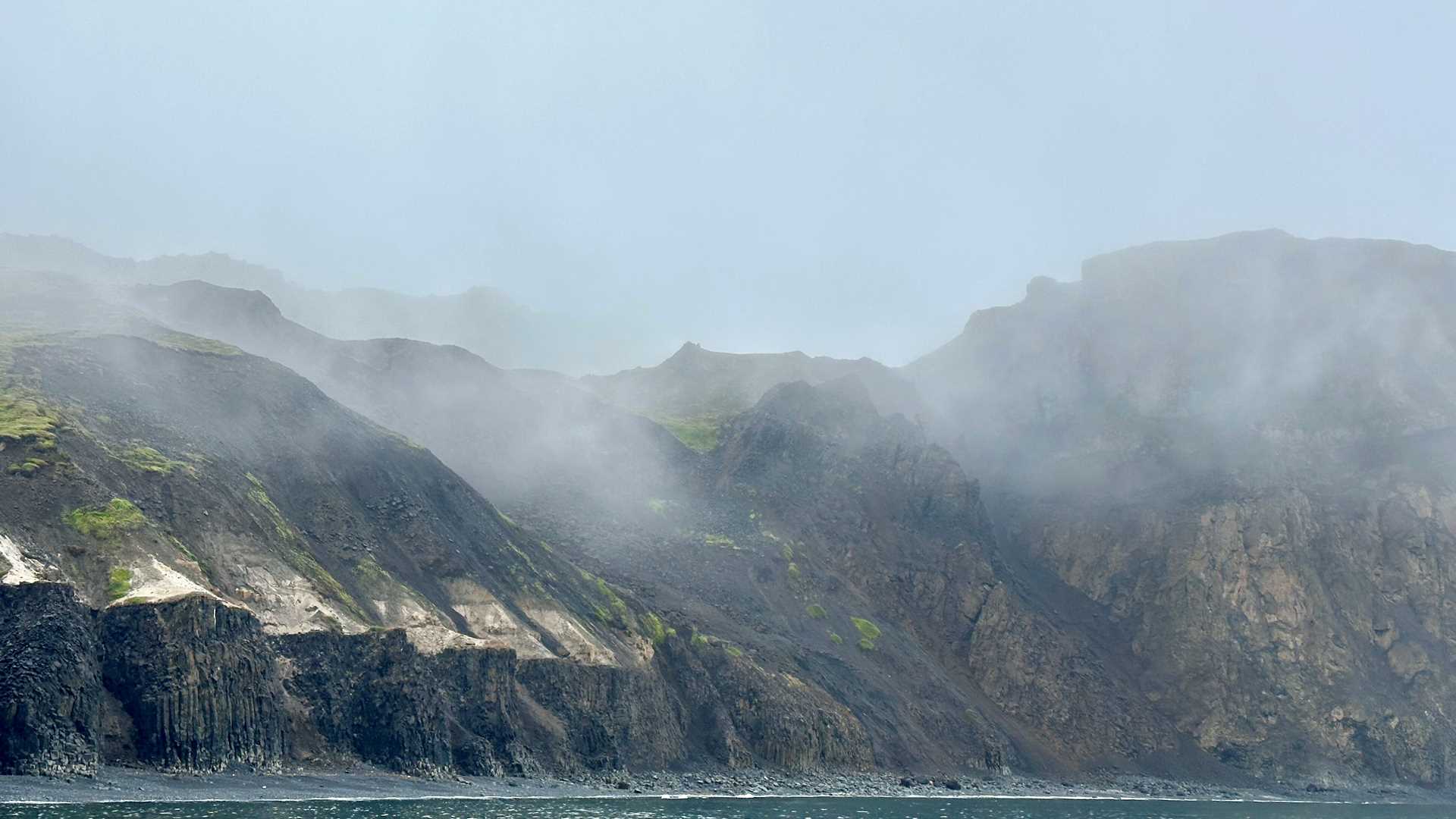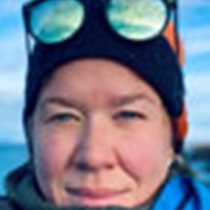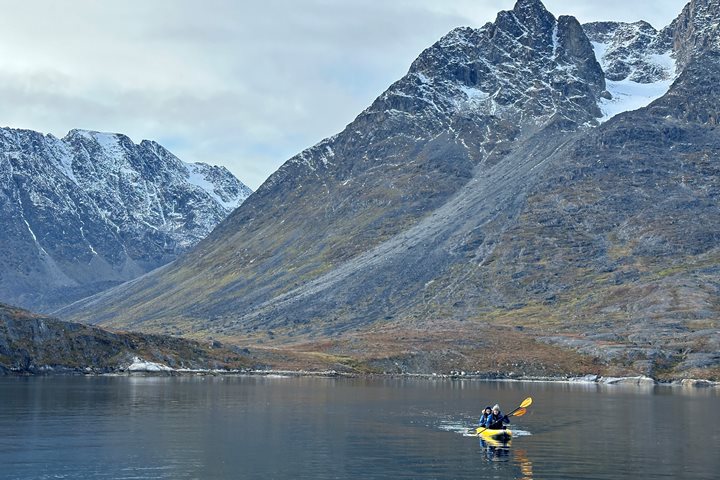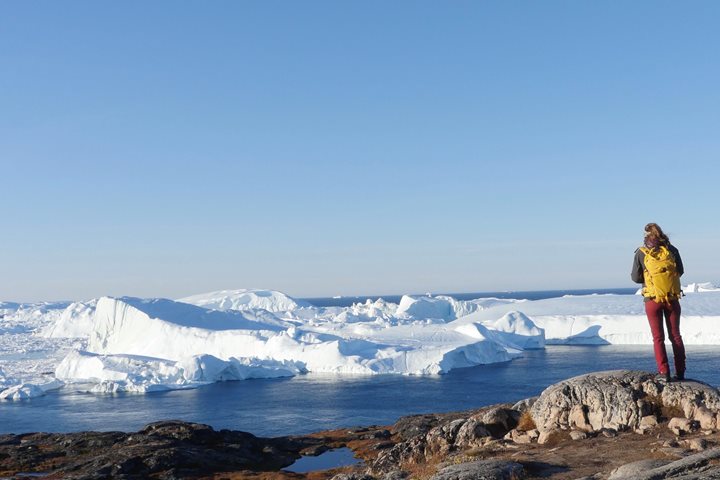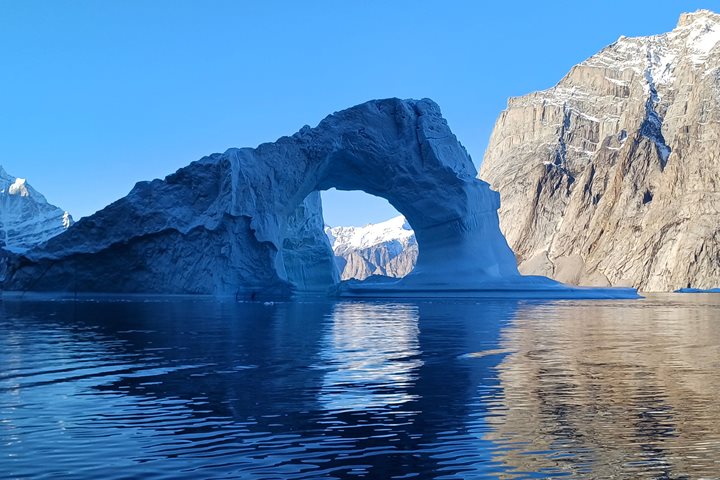Dramatic landscapes and beautiful basalt awaited us as we arrived at Disko Island. Unfortunately, the fog prevented us from a landing. Instead, we went on a stunning Zodiac cruise along the side of the old volcano and observed how basalt formed this part of the island. We continued to the grounded icebergs in the bay, where we spotted the most spectacular shapes and colors in the ice.
The afternoon continued with great lectures from our National Geographic Explorer Wade Davis and our cultural specialist Lars Abelsen. We are now heading toward the Canadian part of our expedition.

